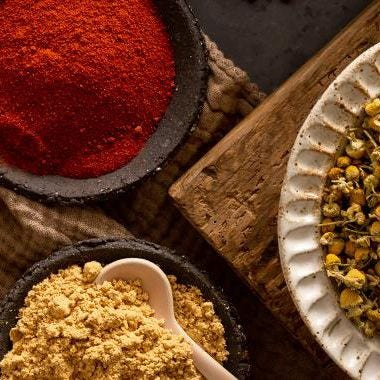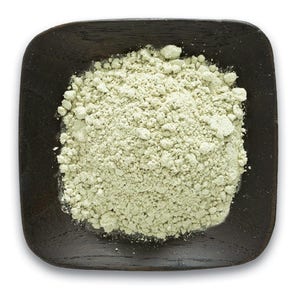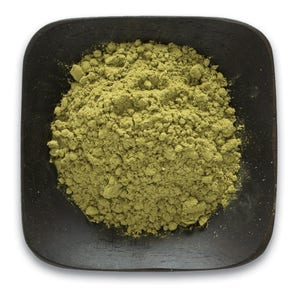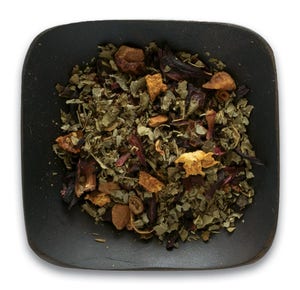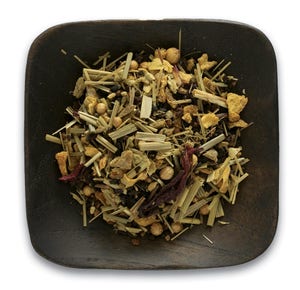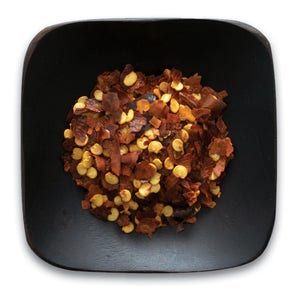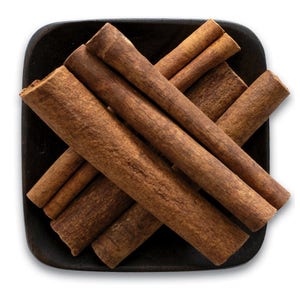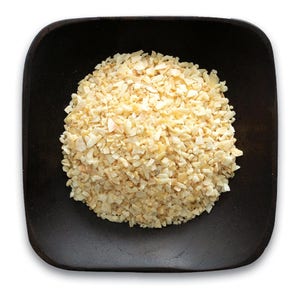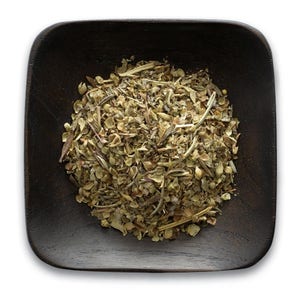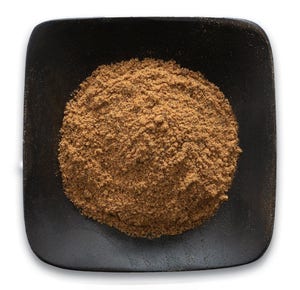Everything You Want to Know About Shopping in the Bulk Aisle
Want to save money at the grocery store? It’s not about what you buy — but how you buy it.
There are two ways to bulk shop.
The first kind involves pushing a giant cart around a “big box” store and filling it with multi-packs of everything from toilet paper to tube socks.
The thinking used to be that to save money, you need to buy everything at once in as big a quantity as you can handle. While this strategy may help reduce the cost per item, it comes with some pretty big downsides.
For one, if you don’t have a massive pantry, this means sacrificing valuable cabinet space to store items you might not use for another six months…or ever. And if you’re buying food, there’s always a chance it will expire before you can finish it.
But the most frustrating part of this strategy is All. The. Packaging. If you’re buying a multi-pack of anything, each item could be individually packaged within a larger package, then sometimes even shrink-wrapped in plastic for good measure. (Next time you buy one of these behemoths, take a look at the amount of packaging compared to what you’re actually getting. It can be pretty shocking!)
While there’s a time and place for stockpiling, this kind of shopping defeats the purpose it was meant to serve — saving you money. It’s also not the most earth-friendly way to keep your pantry stocked.
Thankfully, you can save money AND protect the planet with another kind of bulk shopping. This strategy isn’t about buying more, more, more — it’s about getting just what you need. No more, no less.
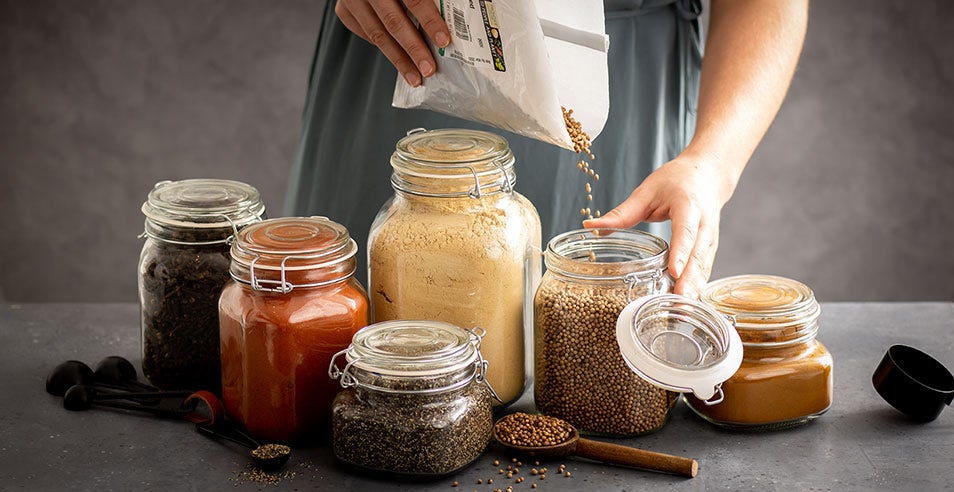

To really master the art of bulk shopping, you need to think beyond multipacks — and beyond packaging in general. In the bulk section at your local co-op or natural foods store, you can load up on grains, spices and herbs, teas and other necessities using your own containers. And you can buy as little or as much as you need.
The benefits of this approach keep coming:
1. It brings your costs down. When you’re not paying for packaging, fancy labels and marketing, you cut down on the cost per item. For everyday essentials like black pepper, cinnamon or garlic, it’s the best way to go, since you don’t need to buy a new bottle every time — you can simply refill the one you’re using. Shopping from the bulk aisle also makes it more affordable to try rare and premium spices that you only need a little of — like cardamom or whole nutmeg.
2. You know what you’re getting. Without any packaging, you can get a better look at the products you’re shopping for and judge the quality for yourself. As a bonus, many of the foods in the bulk section are fresher than their packaged counterparts, locally produced, and often organic or Fair Trade.
Plus, when you’re buying from the bulk bins, you’re typically buying a single ingredient that hasn’t been overly processed with added salt, sugar or preservatives — you’re getting whole, nutritious ingredients that taste great, too.
3. It’s one of the best ways to protect our planet. According to the EPA, containers and packaging make up almost 30% of municipal solid waste, AKA the stuff that winds up in the dump. Shopping in bulk eliminates the need for single-use packaging, keeping more glass, plastic and other materials out of the landfill.
4. It helps you combat food waste. You know all of that food that expires before you have the chance to eat it? That’s food waste. According to Feeding America, the U.S. throws out 108 billion pounds of food every year. Shopping in the bulk aisle in the quantities you need is one of the easiest ways to cut down on food waste without any extra effort on your part.
5. You can streamline your kitchen storage. Variations in product packaging sometimes make it tough to keep your cabinets organized. (There’s always that one bottle that’s just a little too tall for your shelves.) But when you shop using your own refillable containers, you can keep everything neat and uniform.
Tips and Tricks to Get the Most Out of Shopping in Bulk
If shopping in bulk sounds overly complicated, there’s good news — if you buy fresh fruits and vegetables, you’re already doing it! Shopping in the bulk aisle is as easy as shopping for produce; it just takes a little planning ahead.
Here’s everything you need to know before your first bulk run:
- Come prepared. If you haven’t already, invest in jars or other sturdy, reusable containers in a variety of sizes. (More on that later.) At the store, you can add your bulk items directly to these containers. It never hurts to keep a few extras in your car inside a grocery tote, just in case. That said, if you forget to bring them to the store, you can find disposable packets, and sometimes reusable containers for purchase, in the bulk aisle.
- Do your meal planning before making your grocery list. This will give you a better idea not only of what you need, but what quantities to get. It makes sense to stock up on ingredients you use often, but if a recipe you’re making calls for an ingredient you’ll never use outside that meal, go ahead and get the amount the recipe calls for.
- Get familiar with scales. Since the price of bulk items is determined by weight, you’ll want to get familiar with using a digital scale. (Don’t worry, it’s super easy!)
First things first: before you fill your container, you’ll need the “tare weight” — the weight of the jar/container when it’s empty. To do this, set your container on the scale provided and press the tare button until the weight equals “0.” (When you take the container off the scale, you should see a negative weight displayed.)
Next, add your item to the container and place it back on the scale. The weight of your container is already subtracted, so you can see how much your item weighs by itself. Label your jar with the name of the item, its weight, and the corresponding product code listed on the bulk bin. Place it in your cart and checkout as usual!
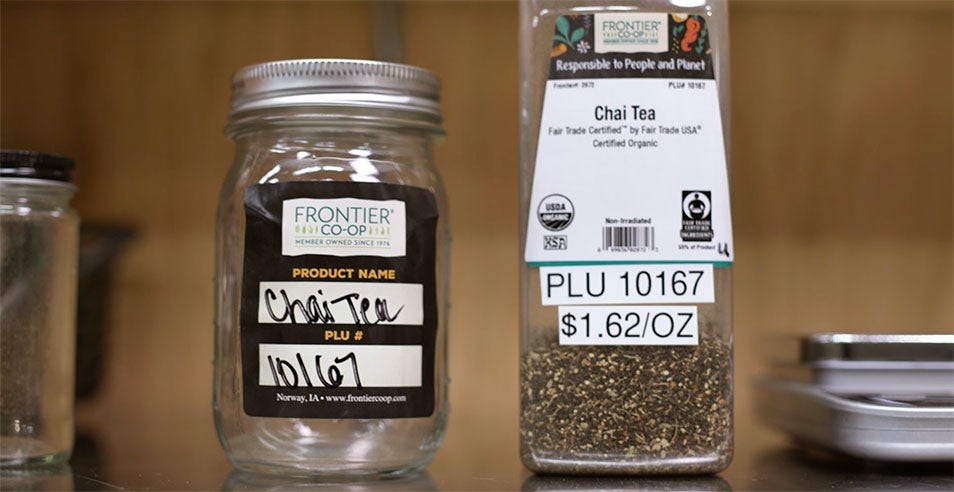

Which re-usable containers work the best for shopping in bulk?
The containers you buy will ultimately come down to your personal taste, but here are a few things you’ll want to consider:
Transparency: You’re more likely to use the ingredients in your kitchen if you can easily see what’s there. (Plus, you’ll know when it’s time to restock!) That said, certain items need to be stored in cool, dark places — in cases like this, get a few containers that allow less light to pass through. Amber colored glass and stainless steel are great options.
- Durability: Look for something that’s easy to clean and safe for dishwashers, if you have one. The best containers have simple lids that offer a great seal — stay clear of ones with a lot of hinges, as these get tricky to clean.
- Bulkiness: A streamlined design will help you save space in your cabinets. Choose containers that are either rectangular or cylindrical, as anything bulgy will quickly eat up space. Containers that are stackable may also come in handy, depending on your setup. You can even find small magnetic jars that let you store spices on the outside of your fridge to save even more room in your cupboards.
- The Look: If you plan to keep containers on your counters or open shelves, don’t overlook appearance! If you don’t like the look of your containers, it will feel like a mess you can’t clean up. In this case, it’s OK to splurge on a few good-looking jars — just as long as they offer the functionality you need.
Don't forget to label your containers! Some spices look nearly identical to one another and it can be hard to tell them apart by sight alone. A good label will clearly identify what is in your container and will spare you from headaches when it is time to cook. You can either make your own labels or download some of ours by clicking here. Note: These labels work best when printed with Avery template 5523.
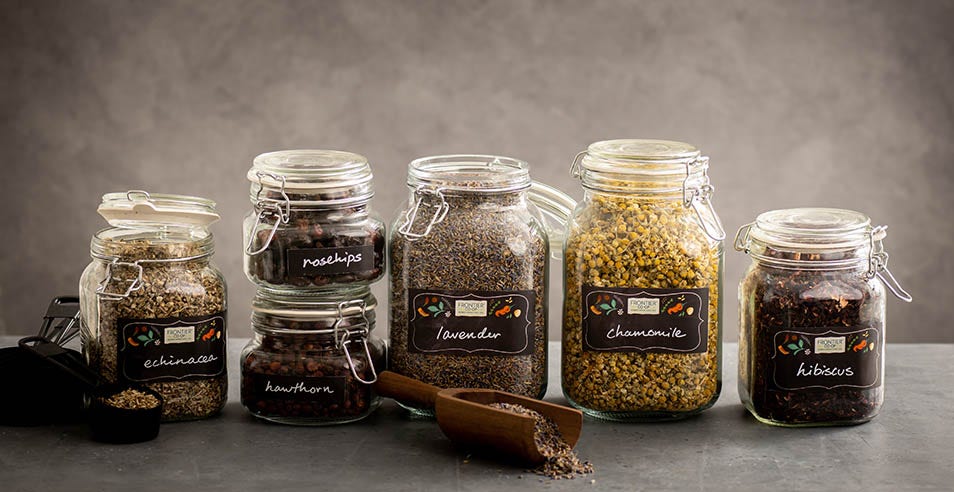

What are the best items to buy from the bulk aisle?
The simple answer? Whatever is available! Bulk shopping is great for everyday pantry staples you go through fast — this could be flour, oats, tea or your favorite spices. It’s also great for items you only use once, and for trying out new ingredients that pique your interest.
Keep in mind, however, that items from the bulk section, while fresher from the start, will most likely expire sooner than canned or pre-packaged options. So large-volume buying may not be the best option for items you seldom use but like to keep on hand.
Our favorite items to buy from the bulk section:
- Spices and Herbs
- Fair-Trade Certified Tea
- Dried Flowers and Other Botanicals
- Flour
- Whole Grains
- Peanut and Nut Butters
- Honey and Maple Syrup
What if my favorite grocery store doesn’t have a bulk aisle?
If you’re looking for larger quantities of an item, you can always shop in bulk online! This is a great option if you’re gearing up for a big-batch cooking session or a holiday baking marathon, or want to gift friends or family with items you hand-bottle and personalize yourself.
Frontier Co-op has a designated bulk section for online shoppers, where you can score a variety of ingredients, typically by the pound.
Where can I get more bulk buying tips?
Follow Frontier Co-op on Instagram, Facebook or Pinterest for more bulk shopping tips and cooking inspiration. Have a few tips that YOU want to share? Comment on our posts or tag us in your own!


